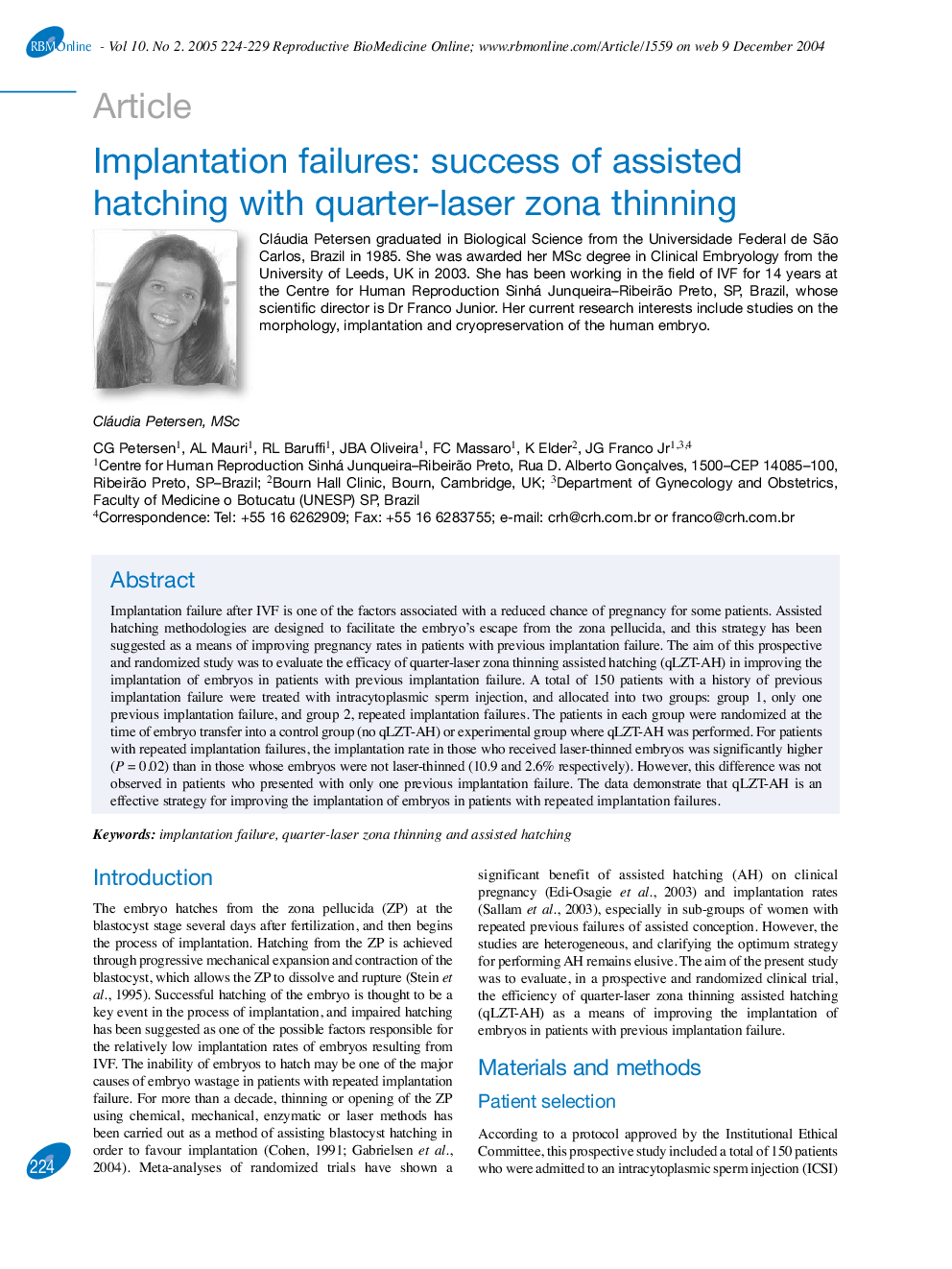| Article ID | Journal | Published Year | Pages | File Type |
|---|---|---|---|---|
| 9334898 | Reproductive BioMedicine Online | 2005 | 6 Pages |
Abstract
Implantation failure after IVF is one of the factors associated with a reduced chance of pregnancy for some patients. Assisted hatching methodologies are designed to facilitate the embryo's escape from the zona pellucida, and this strategy has been suggested as a means of improving pregnancy rates in patients with previous implantation failure. The aim of this prospective and randomized study was to evaluate the efficacy of quarter-laser zona thinning assisted hatching (qLZT-AH) in improving the implantation of embryos in patients with previous implantation failure. A total of 150 patients with a history of previous implantation failure were treated with intracytoplasmic sperm injection, and allocated into two groups: group 1, only one previous implantation failure, and group 2, repeated implantation failures. The patients in each group were randomized at the time of embryo transfer into a control group (no qLZT-AH) or experimental group where qLZT-AH was performed. For patients with repeated implantation failures, the implantation rate in those who received laser-thinned embryos was significantly higher (P = 0.02) than in those whose embryos were not laser-thinned (10.9 and 2.6% respectively). However, this difference was not observed in patients who presented with only one previous implantation failure. The data demonstrate that qLZT-AH is an effective strategy for improving the implantation of embryos in patients with repeated implantation failures.
Keywords
Related Topics
Health Sciences
Medicine and Dentistry
Obstetrics, Gynecology and Women's Health
Authors
CG Petersen, AL Mauri, RL Baruffi, JBA Oliveira, FC Massaro, K Elder, JG Jr,
